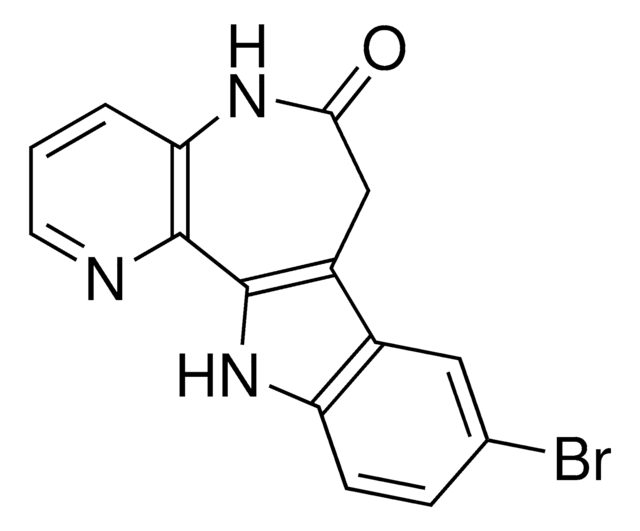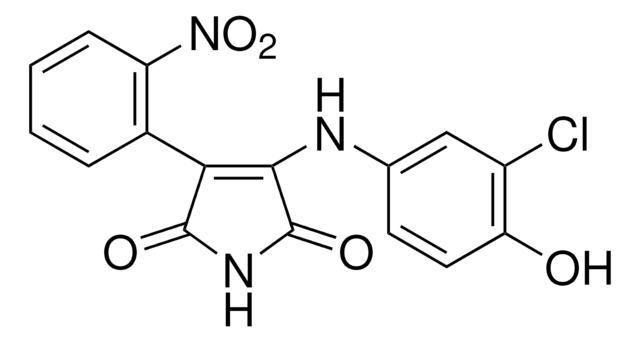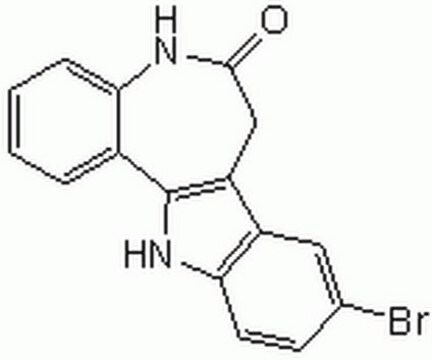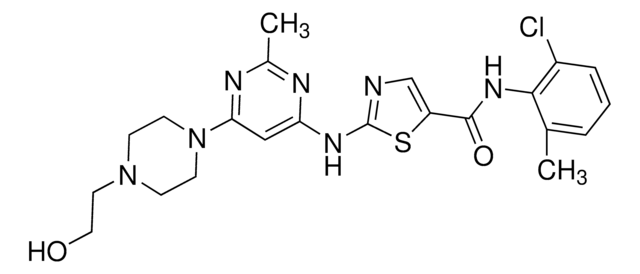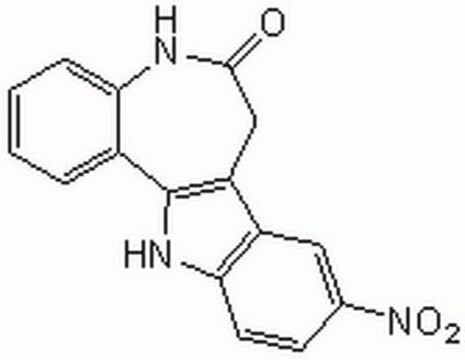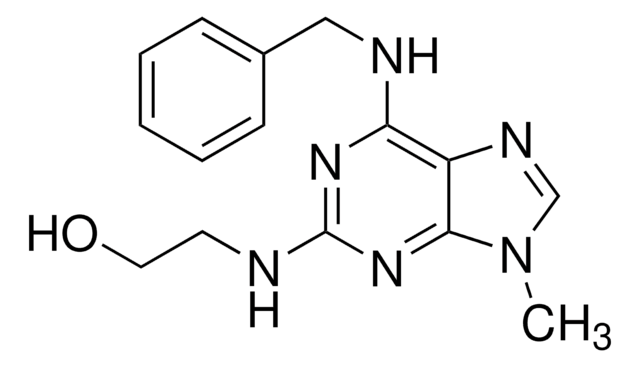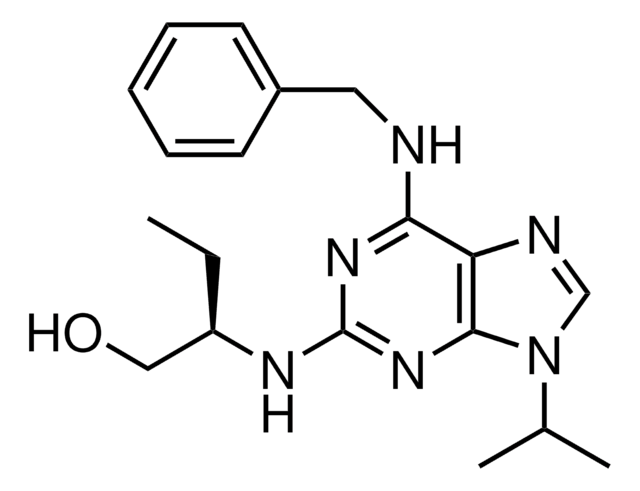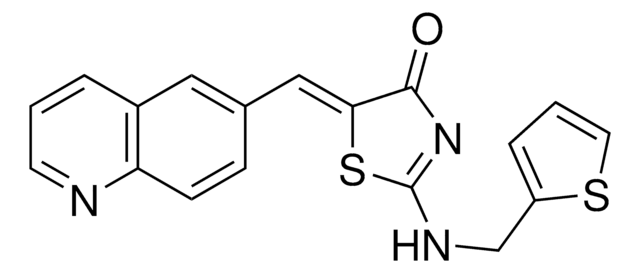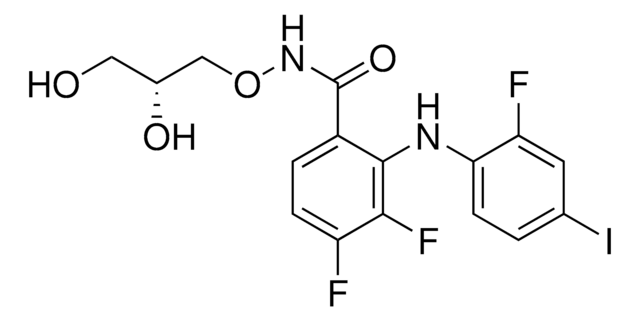K3888
Kenpaullone
≥98%
Sinónimos:
9-Bromo-7,12-dihydro-indolo[3,2-d][1]benzazepin-6(5H)-one, NSC 664704
About This Item
Productos recomendados
Quality Level
assay
≥98%
form
solid
color
yellow
solubility
DMSO: 18 mg/mL, clear, yellow
storage temp.
2-8°C
SMILES string
Brc1ccc2[nH]c-3c(CC(=O)Nc4ccccc-34)c2c1
InChI
1S/C16H11BrN2O/c17-9-5-6-14-11(7-9)12-8-15(20)18-13-4-2-1-3-10(13)16(12)19-14/h1-7,19H,8H2,(H,18,20)
InChI key
QQUXFYAWXPMDOE-UHFFFAOYSA-N
Gene Information
human ... CDC2(983)
mouse ... Gsk3b(56637)
rat ... Gsk3b(84027)
Application
- as a glycogen synthase kinase 3 (GSK3)/ cyclin-dependent kinase (CDK) inhibitor to study its effects on human neural progenitor cell lines
- as an inhibitor of Krupple-like factor 4 (KLF4) in Gs-coupled designer GPCR (Gs DREADD= GsD) Agouti-related peptide (GsD-AgRP) mice
- as a GSK3/CDK inhibitor to study its effects on the sea urchin embryo development
Biochem/physiol Actions
Features and Benefits
Packaging
Storage Class
11 - Combustible Solids
wgk_germany
WGK 3
ppe
dust mask type N95 (US), Eyeshields, Gloves
Elija entre una de las versiones más recientes:
Certificados de análisis (COA)
¿No ve la versión correcta?
Si necesita una versión concreta, puede buscar un certificado específico por el número de lote.
¿Ya tiene este producto?
Encuentre la documentación para los productos que ha comprado recientemente en la Biblioteca de documentos.
Los clientes también vieron
Nuestro equipo de científicos tiene experiencia en todas las áreas de investigación: Ciencias de la vida, Ciencia de los materiales, Síntesis química, Cromatografía, Analítica y muchas otras.
Póngase en contacto con el Servicio técnico